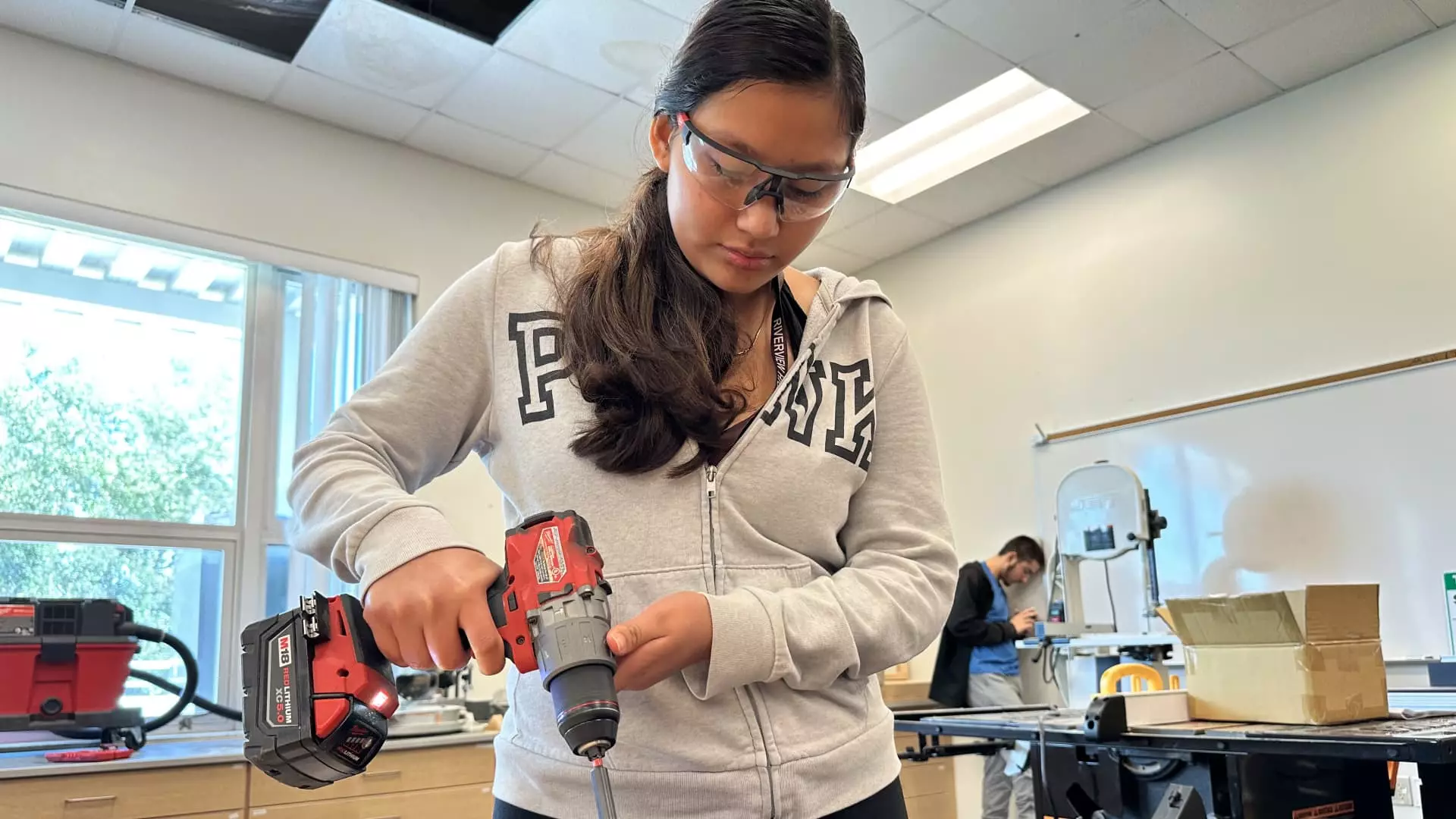As we navigate the complexities of modern education and employment, the traditional pathway of attending a four-year college has come under scrutiny. For many young people today, including those like 18-year-old Angela Ramirez-Riojas in Riverview, Florida, higher education is being viewed as a secondary option rather than the default route to success. This marks a significant cultural shift, influenced by an array of factors, including economic considerations, labor market demands, and evolving perceptions of what constitutes a fulfilling career.
Inspiration from Family Legacy
Ramirez-Riojas’s story illustrates a broader trend among young individuals who are increasingly drawn to vocational training as a means of pursuing rewarding and stable careers. She expresses admiration for her grandfather, a construction worker, who ignited her interest in the trade. This familial connection not only provides personal motivation but also highlights how traditional roles within families can shape career aspirations. By enrolling in a newly established vocational program at Riverview High School, she seeks immediate skill development that aligns with her desire for a practical and fast-tracked career.
The Role of Vocational Programs
Riverview High School’s construction academy exemplifies how vocational programs are being integrated into the educational landscape to meet the needs of both students and the community. With an impressive waiting list highlighting the demand for such training, the program has developed an interesting dual function: providing students with employable skills while addressing a local labor shortage in construction. School administrators, like Principal Erin Haughey, emphasize that these programs are not merely a fallback for less academically inclined students but rather a serious and viable pathway for those passionate about their chosen trades.
What sets programs like Riverview’s apart from traditional academic curricula is their practical focus. As noted by instructor Jeff Lahdenpera, students are not limited to learning basic construction skills; they also gain certifications in specialized trades such as plumbing and electrical work. This broader educational approach indicates a recognition that the construction industry encompasses various roles, including management and logistics—fields that are often overlooked. As such, these programs are empowering students to see the diverse opportunities that a career in construction can offer.
The surge of interest in vocational training aligns closely with the pressing needs of the construction industry, which faces a significant labor shortage. A report by the Associated Builders and Contractors underscores this urgency, estimating the sector needs to attract more than half a million workers to meet escalating demands. With unemployment in the construction field at just 3.2%, the economic landscape is ripe for young individuals considering careers in trades. As Katie Alderman from Neal Communities articulates, the construction sector is primed for growth, necessitating a generation of skilled workers to support ongoing development.
Financial Implications of Trade Jobs
Financial considerations also play a crucial role in shaping students’ career choices. Data indicating that new hires in construction earn higher wages than their counterparts in professional services suggests that vocational pathways can provide significant economic rewards. Ted Jenkin, a certified financial planner, highlights that the supply and demand dynamics in the job market are increasingly favoring skilled trade positions. This shifting economic landscape is fostering a new generation of workers who value immediate employment and financial stability over the uncertain returns of a four-year degree.
The transition towards accepting vocational training as a legitimate and often advantageous career pathway reflects a wider change in societal views on education. Junior Achievement and Citizens Bank’s report revealing that nearly half of high school students believe trade programs or two-year degrees are adequate for their career ambitions speaks volumes. Many young people are recognizing that real-world experience may offer more benefit than traditional academic accolades.
As Generation Z navigates their future careers, the increasing popularity of vocational training reflects a broader understanding of what success can look like. Programs like Riverview High School’s construction academy not only empower students by equipping them with essential skills but also serve as vital solutions to industry challenges. This new mindset paves the way for a future where diverse career paths are celebrated, ensuring that young individuals can engage in fulfilling work that meets both personal and community needs. In a rapidly evolving job market, embracing vocational training is not just an option; for many, it’s the path forward.

